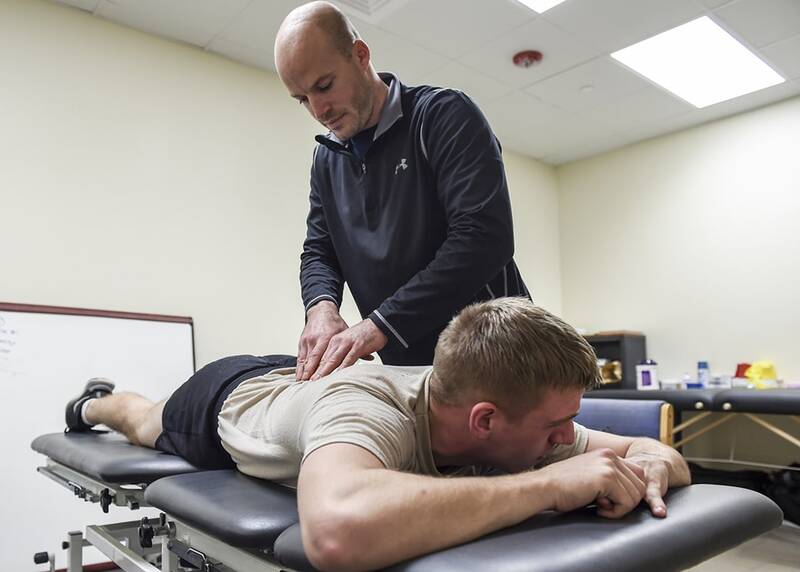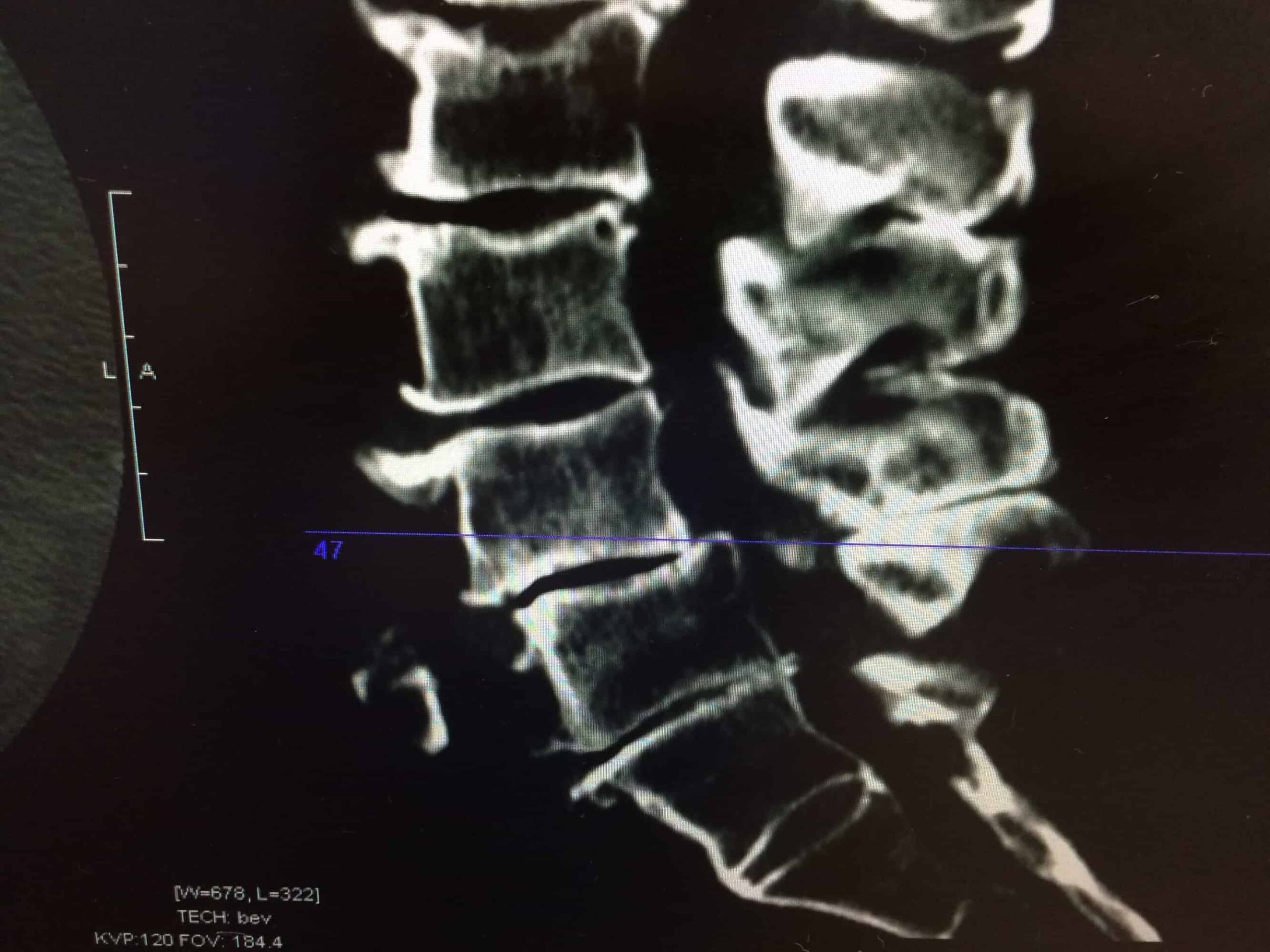Spondylolisthesis happens when one vertebra slips out over the one below it. When this does cause symptoms, they are usually back and leg pain. Some severe cases can cause other, more serious issues. Regardless of whether your spondylolisthesis is causing you pain, it’s important to seek proper conservative care first.
Most spondylolisthesis cases can be cured naturally. In fact, the vast majority of spondylolisthesis patients should seek natural, conservative care before they even consider surgery. Not only are natural options better suited for most people, but they’re also safer and non-invasive. But not all-natural options are equal.
Can Spondylolisthesis Be Cured Without Surgery?
Spondylolisthesis can and should be cured without surgery whenever possible. There are rare instances where surgery may be the best option to prevent neurological issues and correct a severely impaired quality of life.
However, since surgery carries certain risks that are not to be found in conservative treatment options, it’s always best to exhaust any non-surgical options first. Among them, chiropractic care has been successful in treating spondylolisthesis naturally.
The most common natural treatment options for spondylolisthesis include:
- Low-Force Chiropractic Manipulation
- Flexion-Distraction Techniques
- Physical Therapy
- Preventative Measures
- Posture Correction
- Bracing
- Massage Therapy
- Home Exercises
- Trigger Point Therapy
Talking about the importance of natural, conservative treatment is fine, but it really only matters what is proven to work. So, let’s look at some studies to give you an idea of the best treatment for spondylolisthesis.
Spondylolisthesis Treatment Without Surgery: What the Science Says
No matter what kind of issue you’re experiencing, whether it be a headache or painful spondylolisthesis — or anything in between — you want to know the best options for treating the pain. No one wants to live in pain. And no one wants that pain recurring again. So the best options aren’t just those that relieve the pain here and now, only for it to return later. The best options are those that both help relieves the pain and prevent the issue from recurring. Luckily, studies show us that there are some natural options that do just this.
Flexion-Based Treatments
A small study of 47 patients with back pain and spondylolisthesis sought to compare flexion-type exercises and extension-type exercises. The authors of the study found that, at the end of the treatment program, those who did flexion-based treatment exercises had a better outcome. They were more likely to be able to return to work without activity modification, and less likely to need a back brace. They were also more likely to continue their normal activities without being limited by back pain.
A Chiropractic Case Study
This case study details the treatment of a 57-year-old man who was suffering from back and leg pain. The authors of the study diagnosed him with not only spondylolisthesis but also with a multilevel spinal disc injury. He experiences pain and weakness at night and after prolonged sitting.
The successful treatment consisted of spinal manipulation, physical therapy, and rehabilitative therapy. The treatment helped the man avoid surgery and return to his lifestyle after treatment.
A Rare Case of High-Grade Spondylolisthesis
Another case study details the treatment of a 28-year-old woman who had been dealing with back pain for over 10 years when she came to the study’s authors. She had seen other experts, including surgeons, who told her that surgery was the best option if she were to have a normal life. Instead of surgery, she opted for conservative care.
Her natural treatment consisted of spinal manipulation therapy, Active Release Techniques, soft-tissue trigger point therapy, and a regimen of home-based exercises. She was also told to continue her normal exercise routine, which comprised walking, yoga, and gym exercises.
Over the course of five weeks, the woman had nine chiropractic sessions, which brought her pain down from a six out of ten to a two out of ten. Her other symptoms abated, and the study’s authors were confident she could live a normal life without complications related to her spondylolisthesis. They advised her to continue exercising and to seek chiropractic care if any symptoms returned.
Risks of Surgery
For some, surgery may be the best option for treating spondylolisthesis. However, the need to skip over conservative treatment options and go directly for surgery is incredibly rare. Still, since surgery is one of the main invasive options, it’s important to know a bit about complication rates and other factors.
The overall complication rate for spondylolisthesis surgery is approximately 9%. While this may seem fairly low, it’s important to know that this number doesn’t account for reoperation rates, which are relatively high for certain surgical treatment options.
For example, a 2013 study found that those who had spinal decompression surgery alone had an average 15% reoperation rate at two years. (Not to be confused with non-invasive spinal decompression performed by chiropractors.) 
Spondylolisthesis Treatment Options
Natural treatments for spondylolisthesis will vary from person to person, depending on how severe the pain is and what other symptoms there are. It’s important to realize that although spondylolisthesis can cause pain in the sciatic nerve, it’s not a common cause of sciatica pain.
This is an important distinction because spinal decompression, such as is done with the DRS system, is often used for sciatica but is not a good option for anyone with spondylolisthesis. You’ll need to be diagnosed by a professional — typically using x-rays — to determine whether you’re suffering from spondylolisthesis or sciatica pain due to a lumbar disc herniation. In fact, nearly half of all spondylolisthesis cases are asymptomatic. These people don’t even know they have spondylolisthesis until a doctor or chiropractor spots it when examining the body for some other issue or notices something on a routine checkup.
Once diagnosed, the most appropriate treatment options include:
1) Physical Therapy
There has been much success in using stretching and strengthening exercises to prevent further slippage and improve outcomes.
2) Soft Tissue Work
Massage and trigger point therapy can help to reduce pain and muscle spasms.
3) Posture Correction and Preventative Measures
Working on your posture and avoiding activities that may exacerbate your spondylolisthesis can both help the treatment process and prevent further slippage.
4) Chiropractic Spinal Manipulation
Low-force manipulation helps to gently ease the slipped vertebrae back into place over time. This often includes flexion-distraction therapy.
Better Health Alaska offers natural options including spinal manipulation in Anchorage, chiropractic massage, and physical therapy modalities. Call us at (907) 346-5255. They carry much less risk than surgical options. They’re safe, effective, and won’t disrupt your life. So if you have any questions about spondylolisthesis or other back pain issues, contact us today. There’s a better way at Better Health Alaska!
Conclusion
Unless you have spondylolisthesis and back pain from a car accident or other trauma, it’s unlikely that you’ll need immediate surgery. In fact, natural treatment options should be exhausted before you consider surgery — unless you’re experiencing loss of feeling or function, loss of bladder control, or severe pain.
Resources:
- https://europepmc.org/article/med/6449639
- https://www.sciencedirect.com/science/article/abs/pii/S0161475405003520
- https://www.ncbi.nlm.nih.gov/pmc/articles/PMC5596974/
- https://www.sciencedirect.com/topics/medicine-and-dentistry/spondylolisthesis
- https://journals.lww.com/jbjsjournal/FullText/2013/11060/Complications,_Reoperation_Rates,_and_Health_Care.17.aspx









